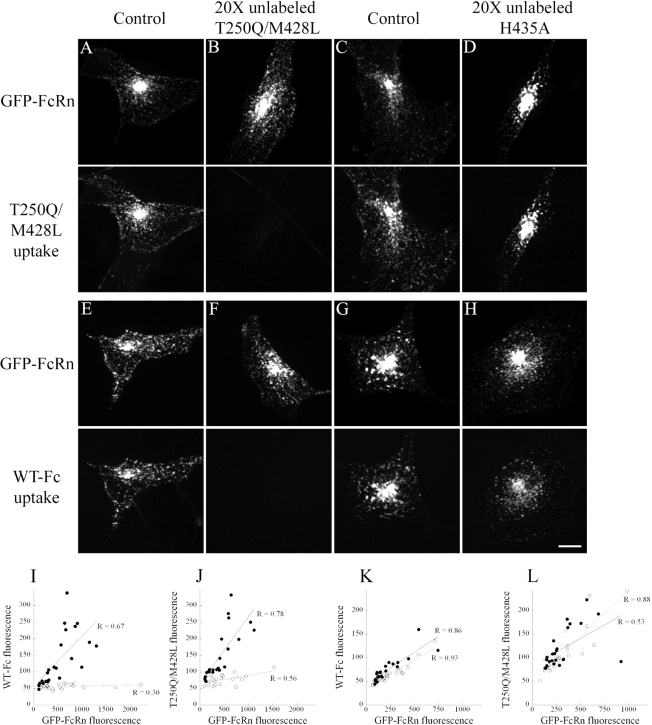Figure 5.
Internalization of fluorescently labeled Fc can be competed by a 20-fold excess of unlabeled FcRn-binding probe, but not nonbinding probe. Mouse FcRn-transfected cells were labeled for 10 min with 100 μg/ml TxR-T250Q/M428L (A–D) or TxR-WT (E–H) and then fixed. Cells in B and F were coincubated with 2 mg/ml unlabeled T250Q/M428L and in D and H were coincubated with 2 mg/ml unlabeled H435A and then fixed. In each of the four experiments, T250Q/M428L and WT controls demonstrated colocalization of the GFP-FcRn and Fc compartments (A, C, E, and G). When either Fc was coincubated with a 20-fold excess of unlabeled T250Q/M428L, Fc fluorescence levels were profoundly reduced (B and F), but little decrease in fluorescent signal was noted when a 20-fold excess of unlabeled H435A was used for the coincubation (D and H). Scale bar, 10 μm. (I–L) Quantifications of competition studies. For each of the conditions above, total cell fluorescence was recorded for each fluor from projections of 3D volumes. Cells incubated with TxR-WT (I) along with unlabeled T250Q/M428L (○, n = 20) showed a clear decrease in internalization of labeled probe relative to noncompeted cells (●, n = 23). Cells incubated with TxR-T250Q/M428L (J) along with unlabeled T250Q/M428L (○, n = 21) showed a clear decrease in internalization of labeled probe relative to noncompeted cells (●, n = 23). No differences in internalization were observed in similar cell populations incubated with TxR-WT (K) with (○, n = 28) or without (●, n = 21) unlabeled H435A. No differences in internalization were observed in similar cell populations incubated with TxR-T250Q/M428L (L) with (○, n = 25) or without (●, n = 24) unlabeled H435A.

